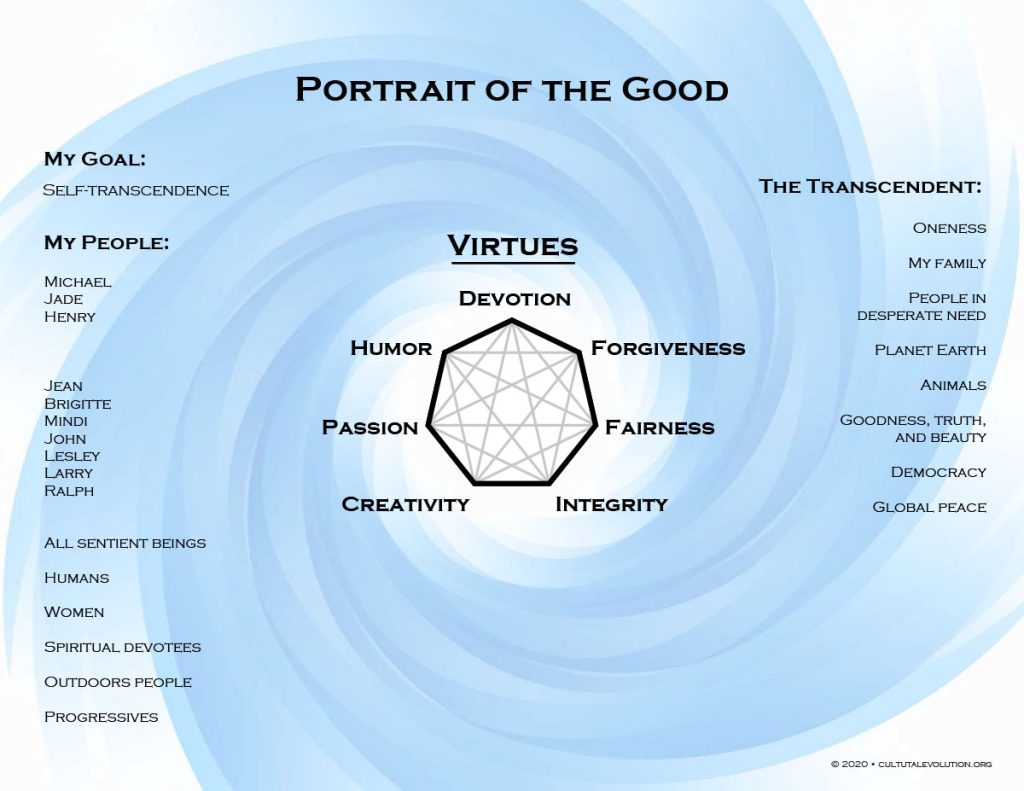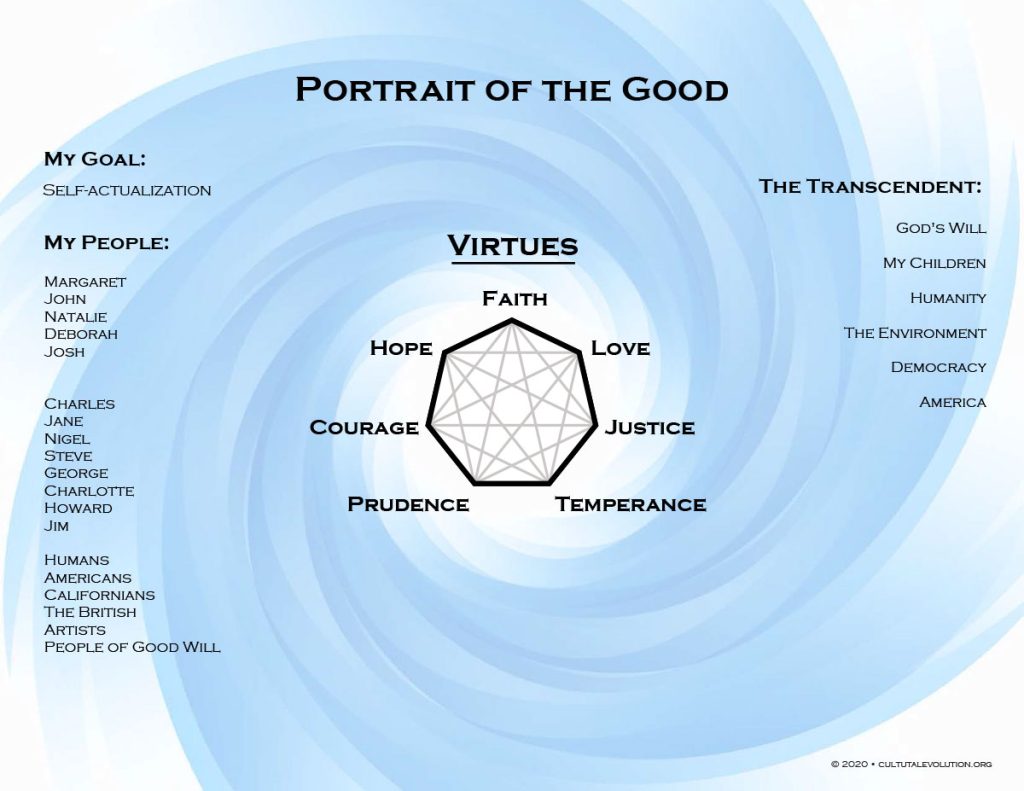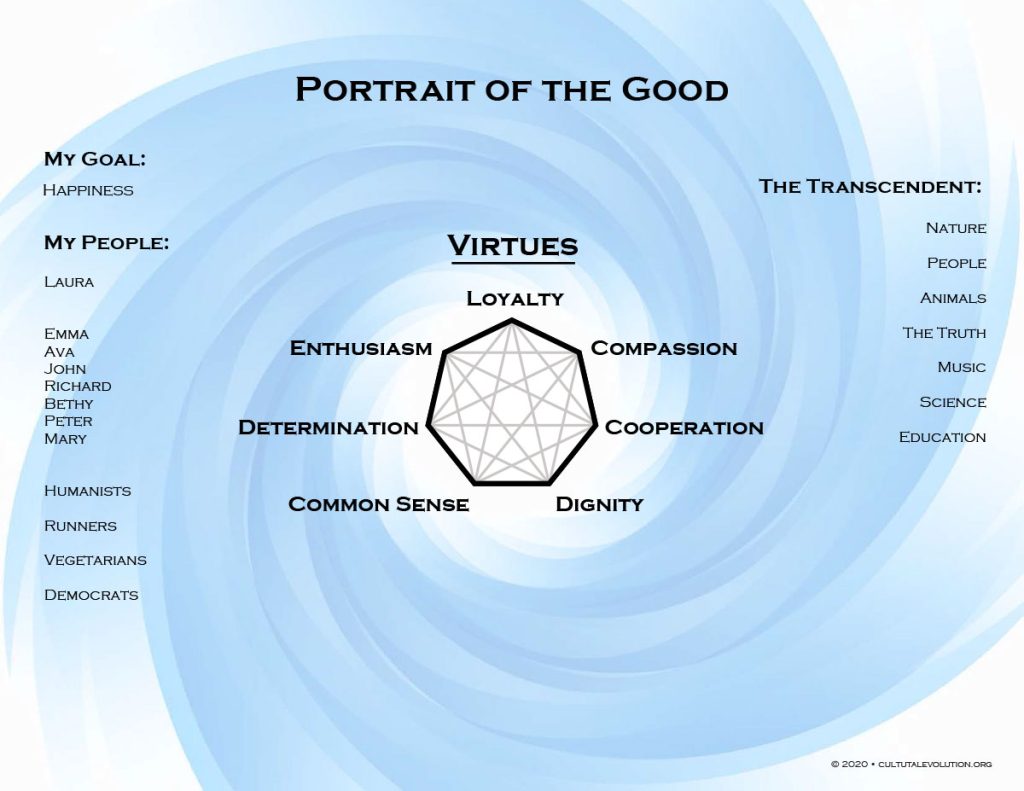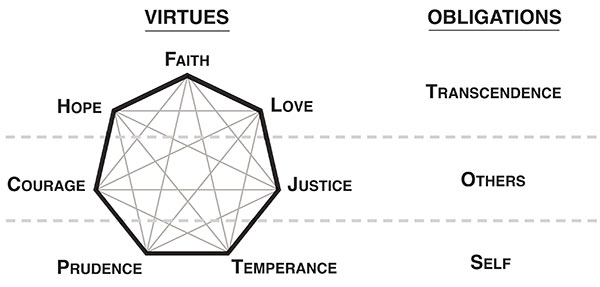Developmental Politics’ Values Integration Method
 Developmental Politics seeks to mend the torn social fabric of American society. We want to help American culture grow into a better version of itself. Our “politics of culture” is neither left, nor right, nor centrist—we’re working to integrate the best of all sides.
Developmental Politics seeks to mend the torn social fabric of American society. We want to help American culture grow into a better version of itself. Our “politics of culture” is neither left, nor right, nor centrist—we’re working to integrate the best of all sides.
Our cultural approach to politics focuses on the basic units of culture, which are large-scale, values-based worldviews. Over the past sixty years, American culture has become starkly divided among the three major worldviews known as modernism, progressivism, and traditionalism. These three competing value frames are each focused on solving different sets of perceived problems:
- Modernism is focused on overcoming poverty and ignorance, and on liberating each individual to achieve their full potential.
- Progressivism is concerned with righting the wrongs of modernism by protecting the environment and achieving social justice.
- Traditionalism seeks to preserve America’s heritage and conserve the best of what has come before.
Because each of these distinct problem sets continue to afflict American society, the problem-solving focus of each of these worldviews is still very much needed. Each form of culture thus has a necessary and ongoing job to do.
Yet although each of these major worldviews has positive goals and values, each worldview also includes negatives. Modernism’s negatives include environmental degradation, gross inequality, and nuclear proliferation. Progressivism’s negatives include anti-modernism (the failure to recognize how progressive culture is predicated on the freedom and prosperity provided by modernism’s liberal values), reverse patriotism (which characterizes American history as a sinister criminal enterprise), and divisive identity politics (which promotes grievance without gratitude, and which disrespects the institution of democracy). Traditionalism also has negatives such as racism, sexism, homophobia, and authoritarianism.
Our developmental political strategy seeks to integrate and harmonize the positive values of each major worldview into a larger cultural synthesis. For example, advocates of developmental politics, known as “developmentalists,” want to better employ the innovative power of business to significantly reduce carbon pollution. They want to alleviate economic inequality by removing barriers to entrepreneurship in disadvantaged communities. They want to restructure America’s healthcare system to work better for everyone, without creating a gigantic federal bureaucracy in the process. They seek a more compassionate immigration system that nevertheless recognizes the legitimate interests of the American nation-state. Developmentalists also aspire to a peaceful foreign policy that does not result in isolationism. Developmental politics, however, is more than a list of issue positions. This fresh approach to politics offers a new method for achieving agreement known as values integration.
The Method
The values integration method affirms the positive values of all three major American worldviews and seeks to find “win-win-win” solutions that honor and incorporate these values into a larger whole. This win-win-win political approach is derived from the business practice of stakeholder integration, which has proven to be highly effective at building agreement and increasing the “size of the pie.” The values integration method is effectively post-progressive—it transcends progressivism because it does what progressivism cannot: It fully recognizes the legitimacy and evolutionary necessity of modernism, traditionalism and progressivism. This method accordingly approaches political issues with the best interests of each worldview in mind.
However, it must be acknowledged that America’s major worldviews have emerged over the course of history by pushing off against each other, so they cannot be simply included all together in one static position because that would sap the charge that gives them life. Rather, these three worldviews must be integrated in a way that continues to preserve their respective challenge to each other. The values integration method is itself a kind of agreement technology—a new kind of “cultural intelligence” that can improve the functionality of America’s democracy. As demonstrated by our evolving platform of policy recommendations, the values integration method produces issue positions that people naturally find more agreeable. These proposals accordingly provide a needed alternative to the excessively polarized positions that currently dominate American political discourse.
Unlike the standard approach of making tactical compromises to try to get most of what our preferred side wants, the values integration method seeks to include the values of each worldview into the mix from the beginning because it actually affirms all of these values and wants to see them advanced. Within conventional politics, people are often faced with win-lose propositions. But by focusing on bedrock values, it becomes possible to discover something closer to a win-win-win solution, even if such a solution does not completely satisfy all parties. Simply put, the developmental approach to politics seeks to accommodate the concerns of all sides, not just to get its way, but to make authentic progress by creating cultural evolution.
The values integration method does not seek to change the values people hold dear—it doesn’t want to erase or subtract peoples’ values, it just wants to add to them. Instead of trying to convert or replace existing values, this new approach seeks to expand the scope of what people are able to value. Indeed, this summarizes our theory of change: culture and consciousness coevolve as people’s perception of what is valuable becomes wider and deeper.
Examples of the Values Integration Method
The first example of developmental politics’ values integration method in action is found in American society’s evolving mores around masculinity and femininity. Over the last several decades, our collective idea of what it means to be a “real man” has grown to include being sensitive and even occasionally emotional. Likewise, our ideals of femininity have also evolved to include strong and independent women. This evolution of gender norms has come about through the realization that mature masculinity and mature femininity both require a partial integration of the qualities that are most frequently associated with the other. And this evolution of our gender norms has had tremendous political and legal consequences. This move toward integration, however, does not necessarily involve a fusion of masculinity and femininity, which would mean a move toward androgyny. While there is nothing wrong with androgyny, it can represent a kind of “centrist compromise” that eliminates the procreative tension inherent in the masculine-feminine polarity. Stated otherwise, the evident progress made in American society’s concepts of gender has not come about in an attempt to split the difference between masculine and feminine. Rather, both poles have been augmented and improved through the partial integration of their respective strengths in a way that also preserves their natural differences.
A more politically specific example of values integration that has produced progress over a shorter time span is found in the issue of gay marriage. Advocacy for the right to marry has been instrumental in the larger success of LGBT rights movement overall because the cause of gay marriage integrates important values from each major worldview. Gay marriage advances progressive values, modernist values, and crucially, traditionalist family values. Traditionalists who otherwise object to “decadent homosexual lifestyles” find it much harder to resist calls for the basic right to make a monogamous family commitment through the institution of marriage. While perceived traditionalist interests are not included in LGBT marriage rights, traditionalist values are included nonetheless. It was thus through values integration that this previously polarized issue has not only become law, it has also gained widespread social acceptance.
Another recent example of rapid political progress achieved by integrating values from across the spectrum, even in the context of America’s hyperpolarized political environment, is found in the issue of marijuana legalization. This once vilified botanical has now become partially or completely legal in the majority of American states, with more soon to follow. And like gay marriage, this issue has succeeded because it integrates the values of all three major worldviews. The cause of legal pot integrates progressive values by decriminalizing the drug, it integrates modernist values by making a useful medicine available to those who need it and by ending morality-based prohibition, and again crucially, it also integrates the traditional conservative values of federalism and subsidiarity, which seek to allow local populations to determine what’s best for their community when it comes to political issues such as prohibition.
Conversely, in the same way that the successful integration of values explains the recent progress on issues such as gay marriage and the legalization of marijuana, the lack of adequate values integration helps explain why other issues remain stuck. The issue of climate change, for example, has yet to achieve adequate political success because its advocates have failed to sufficiently integrate the values of the political right. The strident anti-modernism of the progressive leaders of the climate change movement has produced strong resistance from those on the right, who would be less opposed to action on climate change if their values were better integrated into this issue’s policy proposals.
In their otherwise admirable efforts to preserve the environment, climate change activists often repudiate both modernist prosperity values and the traditionalist values which seek to protect the status quo. Conservative opposition to action on climate change, however, could be reduced by better integrating modernist concerns regarding the fragile ecology of markets, and the need to carefully consider the health of the economy in environmental policy decisions. Modernist values could also be better integrated into the movement to combat global warming if environmental activists showed more interest in engaging the creative power of business, and if they acknowledged that the transition to sustainable forms of energy can be accomplished more readily by the private sector than by the Federal government.
In addition to climate change, the stuck issue of immigration could likewise move forward if the left’s values of fairness and caring were better combined with traditionalist heritage values (promoting immigrant assimilation) and the meritocracy values of fiscally conservative modernists (favoring immigrants with talent and resources).
This website includes a platform of specific policy recommendations which further exemplify the use of the values integration method to achieve “win-win-win solutions”:





